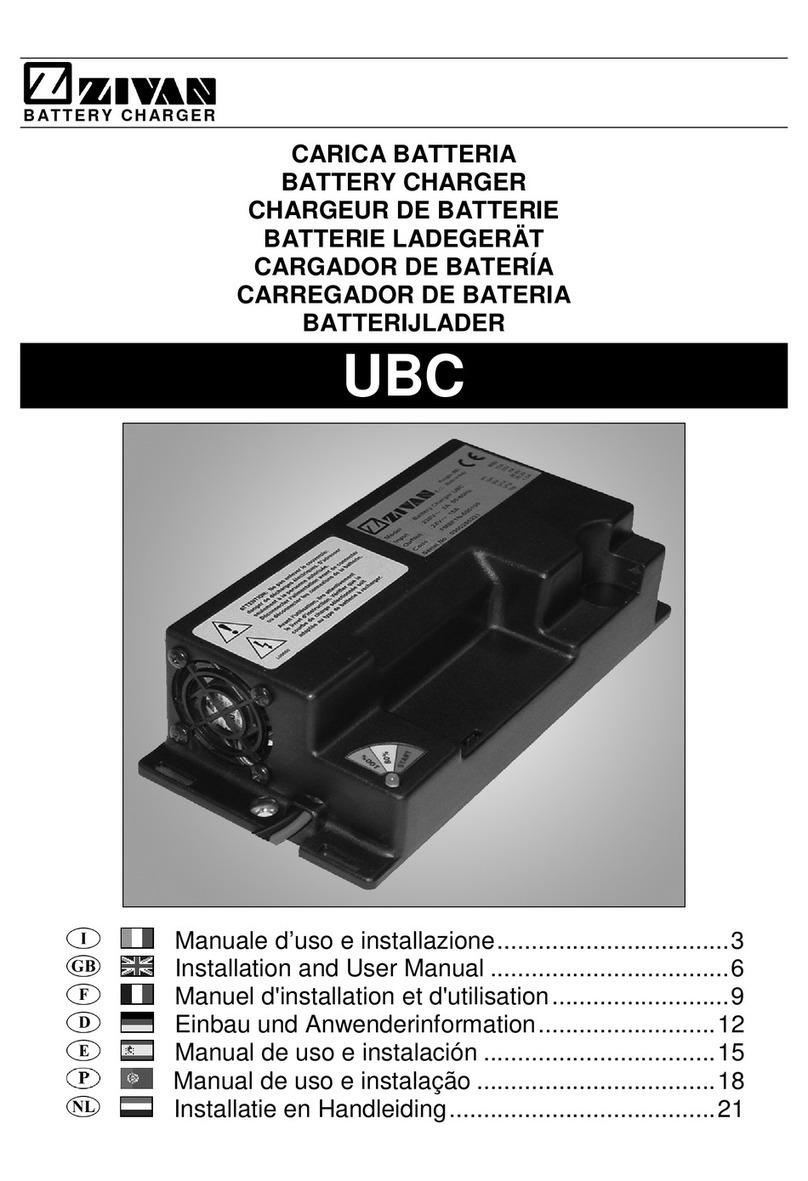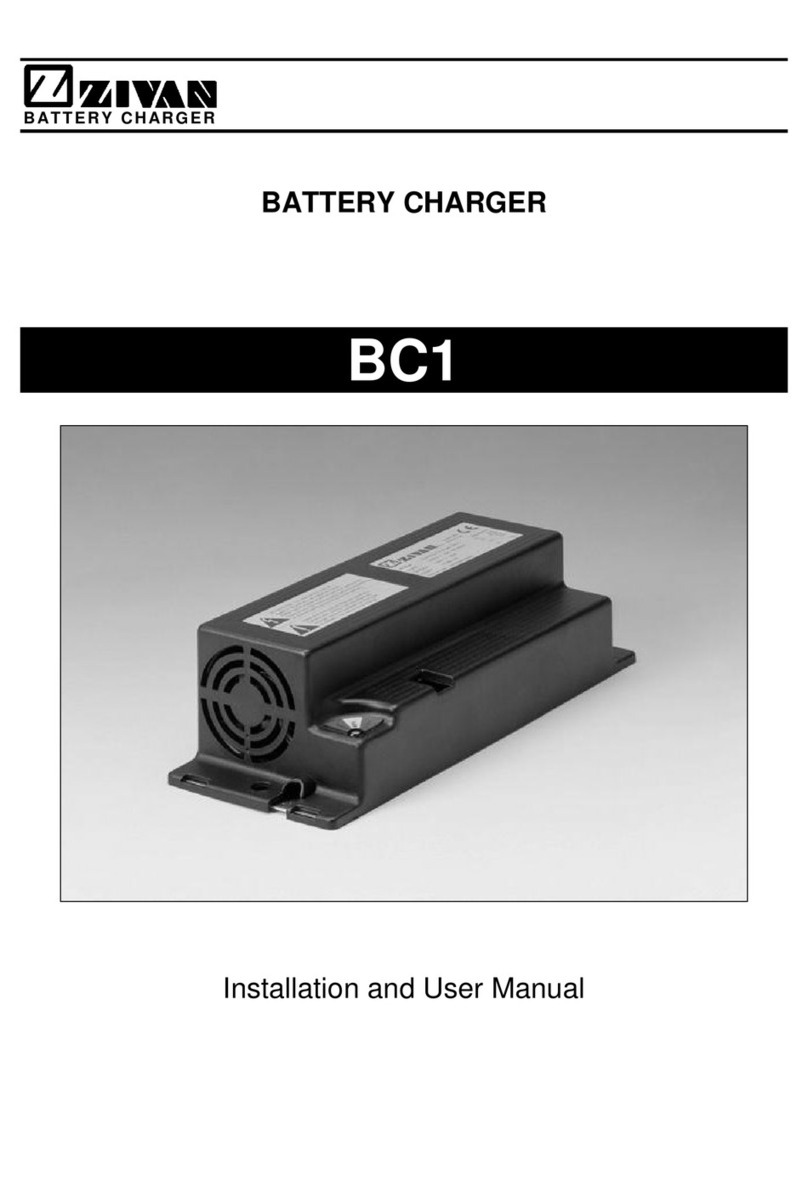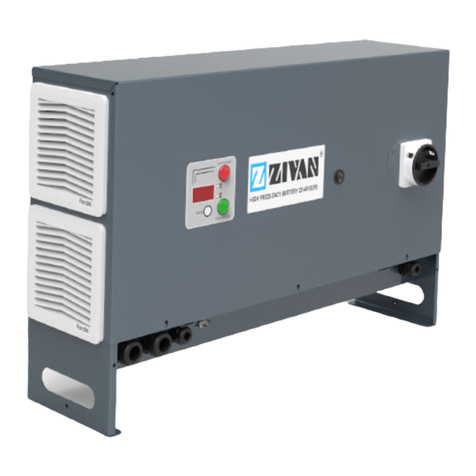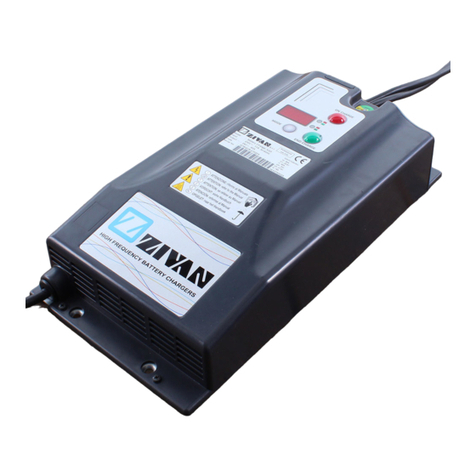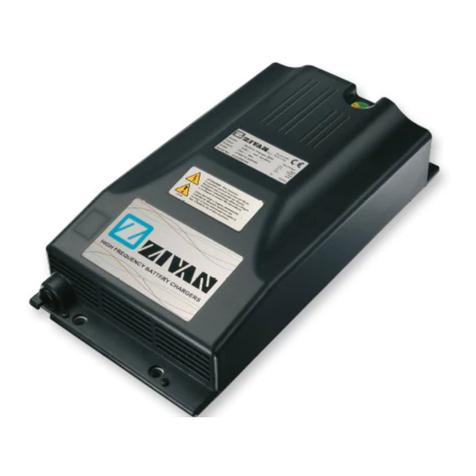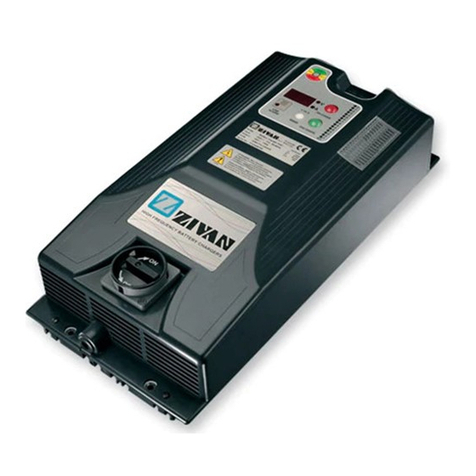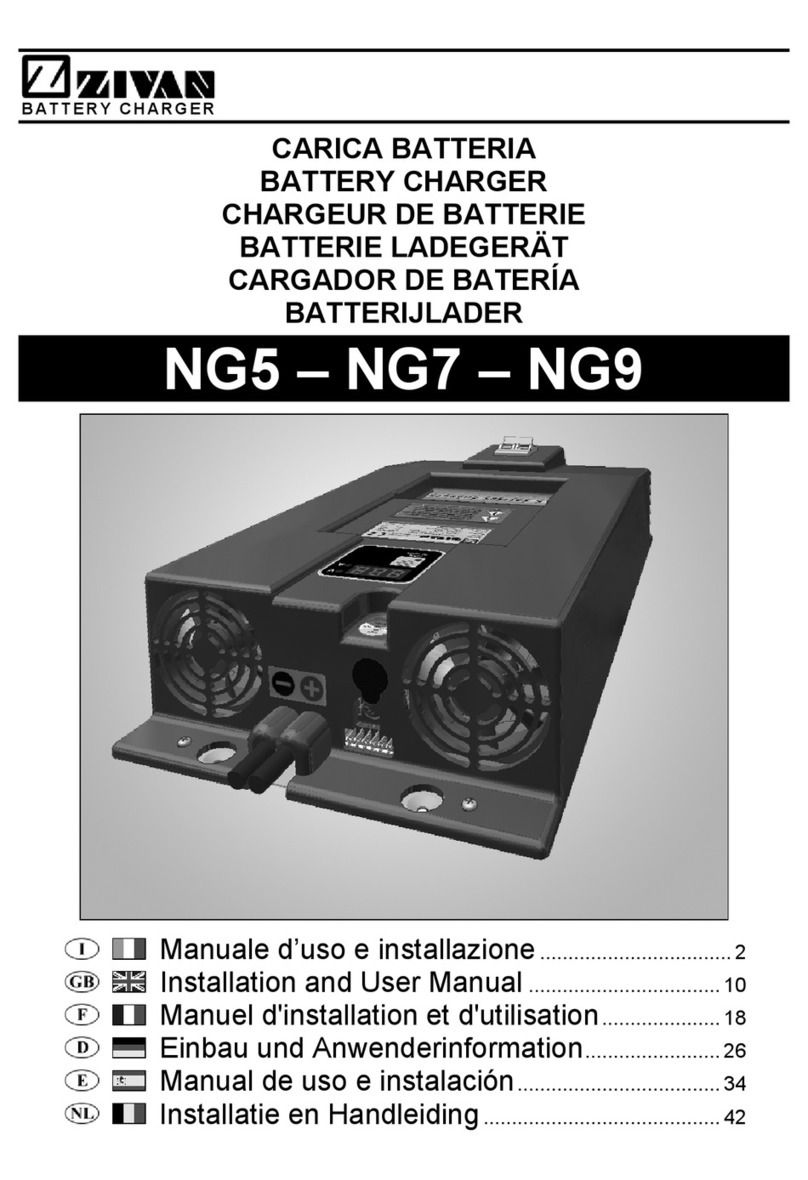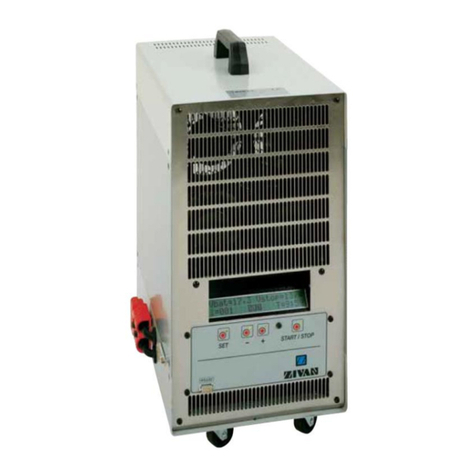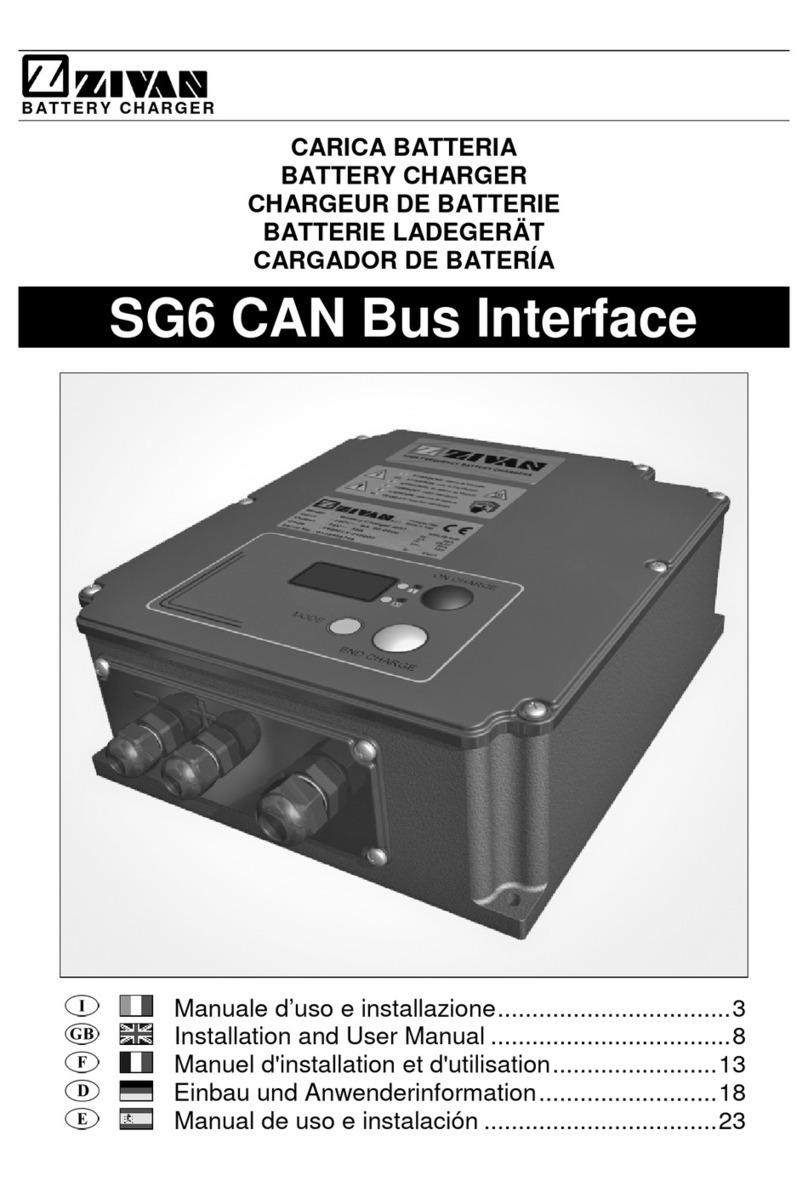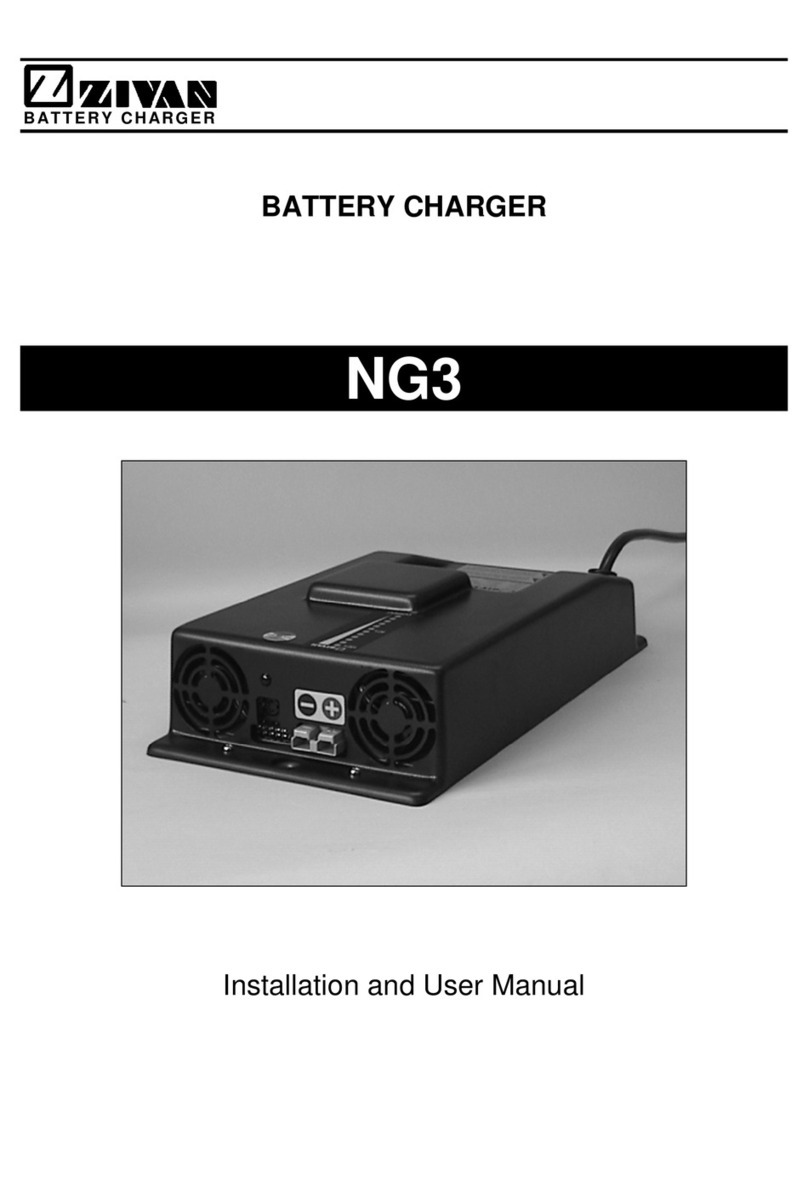Carica batteria NG5-7-9Italiano
D01274-00 3
Installazione e istruzioni di sicurezza
Il carica batteria NG5-7-9 è stato progettato per garantire sicurezza e prestazioni affidabili. Tuttavia, onde
evitare danni alla propria persona e al carica batteria, si raccomanda di osservare le seguenti precauzioni
di base:
•Leggere attentamente le istruzioni sull’installazione contenute in questo manuale. Per futuri
riferimenti, riporre il manuale in un posto sicuro.
•Posizionare il carica batteria su una superficie piana e stabile.
•Per evitare il surriscaldamento, accertarsi che tutte le aperture non siano ostruite. Non posizionare il
carica batteria nei pressi di fonti di calore. Assicurarsi che lo spazio libero intorno al carica batteria sia
sufficiente per garantire un’adeguata ventilazione e un facile accesso alle prese dei cavi.
•Proteggere il carica batterie da eventuali spruzzi d’acqua e non versare liquidi al suo interno.
•Verificare che il tipo di alimentazione a disposizione corrisponda al voltaggio previsto e indicato nella
targhetta del carica batteria. In caso di dubbio, consultare il proprio rivenditore o la società elettrica
locale.
•Come dispositivo di sicurezza e di compatibilità elettromagnetica, il carica batteria dispone di una
spina a quattro poli con messa a terra, che può essere inserita soltanto in una presa con messa a
terra. Nel caso in cui non sia possibile inserire la spina nella presa, è molto probabile che la presa a
disposizione sia di un tipo vecchio e non a terra. In tal caso, contattare un elettricista per far sostituire
la presa. Si raccomanda di non usare un adattatore per risolvere il problema della messa a terra.
•Evitare che il cavo di alimentazione sia in una posizione di ingombro. Nel caso in cui il cavo diventi
logoro o subisca danni, sostituirlo immediatamente.
•Nel caso in cui si usi una prolunga o una presa multipla, verificare che queste supportino il totale
della corrente richiesta.
•Scollegare l’alimentazione (spegnere l’interruttore) prima di collegare o scollegare le connessioni alla
batteria.
•Per la ricarica di batterie al Piombo: ATTENZIONE: Gas esplosivi -Evitare la formazione di fiamme e
scintille. -La batteria deve essere posizionata in un luogo ben ventilato.
•Non utilizzare per ricaricare batterie installate a bordo di automobili a motore termico.
•Evitare di ricaricare batterie non ricaricabili.
•Verificare che la tensione nominale della batteria da ricaricare corrisponda a quella indicata nella
targhetta del carica batteria.
•Verificare che la curva di carica selezionata sia adatta al tipo di batteria che si deve ricaricare. In caso
di dubbio, consultare il proprio rivenditore. La ZIVAN S.r.l. declina ogni responsabilità nel caso di
errore nella scelta della curva di carica che porti a un danneggiamento irreversibile della batteria.
•Per evitare cadute di tensione e così garantire la carica completa della batteria, i cavi di uscita
devono essere più corti possibile e di sezione adeguata alla corrente di uscita.
•Nel caso di compensazione termica della tensione di batteria, posizionare la sonda termica nel punto
più caldo del vano batterie.
•Non tentare di effettuare riparazioni sul carica batteria. L’apertura del coperchio potrebbe esporvi al
rischio di scosse elettriche.
•Nell’eventualità che il carica batteria non funzioni in modo corretto o che sia danneggiato, scollegarlo
immediatamente dalla presa di corrente e dalla presa di batteria e contattare il rivenditore.

